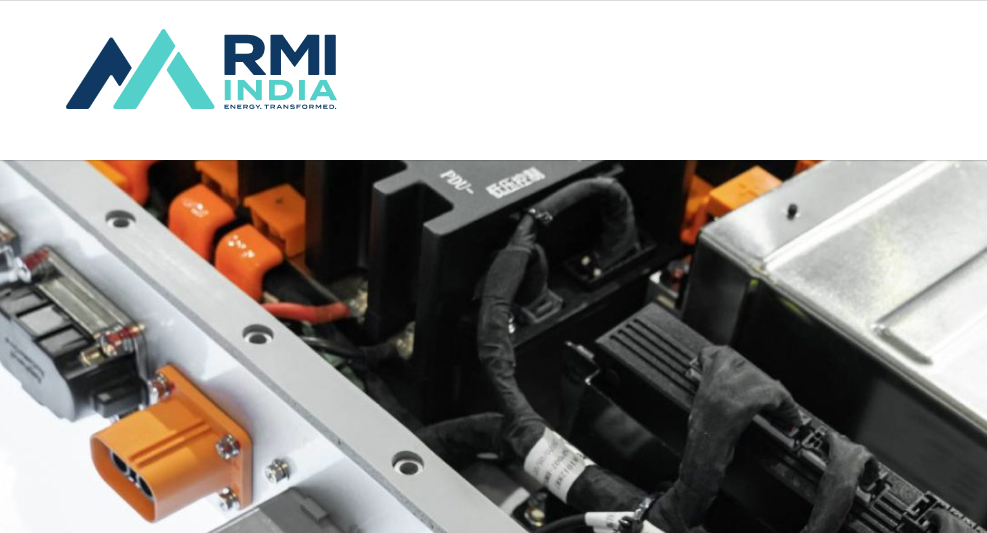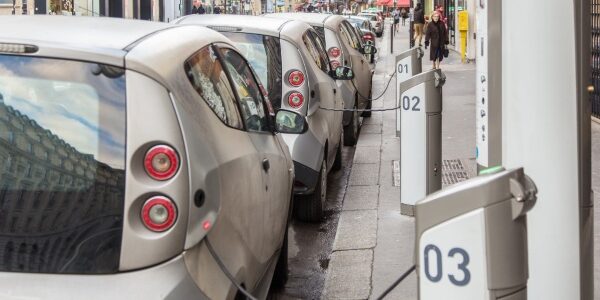A Powerful Policy Will Reshape Battery Sustainability – in the European Union and Beyond
The regulation is a game-changing policy for battery supply chains in the context of the energy transition
As global economic leaders take action to avoid the worst effects of the climate crisis, there is a rising opportunity to reshape supply chains in the energy transition. Electric vehicles are a prime example: there is growing momentum to decarbonize transportation with ambitious policies that shift to 100% zero-emission vehicles. Transforming a fossil fuel based system to a battery-powered future will be a revolution – not only for cleaner air and a stable climate, but for the automotive industry and all related production, including batteries themselves.
At the end of 2022, the institutions of the European Union (EU) agreed on a new regulation aimed at making the European battery value chain more sustainable. The text represents an innovative blueprint for legislation worldwide as well as for future EU sustainable product policies. For the first time, batteries will be regulated in the EU: producers will have to apply due diligence requirements, limit the carbon footprint of their batteries to a certain level, manufacture them with a minimum recycled content, and ensure proper collection and recycling at the end of their life.
The regulation is a game-changing policy for battery supply chains in the context of the energy transition. High-performing batteries designed for circularity will further reduce the environmental impacts of electrifying the transport sector, thus becoming an even better alternative to conventional combustion vehicles. Last year, the European Union agreed to end sales of combustion cars and vans by 2035 in favor of electric models, as part of the “Fit for 55” climate action package, which also includes clean energy commitments. From bikes and scooters to vans and back-up power storage, sustainable batteries go hand-in-hand with electrification of transport and a more efficient, renewable energy system.
How will the EU battery policy drive sustainability?
The new regulation will target the entire battery life cycle and apply for all types of batteries that are sold in the EU. It will address sustainability requirements covering the whole battery value chain such as raw material extraction, manufacturing, performance as well as collection, recycling and repurposing for key metals such as lithium, cobalt, lead, and nickel. The planned measures will be gradually introduced from 2024 onwards, starting with the sustainability requirements. In the coming years, new standards for Extended Producer Responsibility will apply, meaning that all batteries must be collected, free of charge for end-users. And to ensure that valuable materials are recycled and recovered, stricter targets for recycling efficiency and material recovery will be phased in – by 2027, new batteries must include 50% recovered lithium, graduating to 80% by 2031. The new battery regulation will also improve the data collection of batteries, which will not only benefit consumers, but also end-of-life operators and policy-makers. High-performing batteries, like EV batteries, will also be equipped with a digital battery passport aiming at providing the necessary information of its use and specifications.
Another novel element is a due diligence policy for battery producers which will not only help to prevent environmental damages and abuses but will set new standards in terms of human rights and labor protection within supply chains. This is a global precedent, which is essential as battery lifecycles are embedded in global markets. In a previous blog on this topic, Earthworks Executive Director Jennifer Krill highlighted how policies like this one can help drive responsible minerals sourcing that centers human rights and the environment.
Another way the EU battery regulation ensures that the supply chain is clean is by limiting the CO2 footprint of batteries to ensure that only low-carbon batteries can be placed on the market. By setting a maximum carbon footprint threshold, producers will need to innovate their production processes, leading to an increase of renewable energy use and higher input rate for recycled content. Compared to combustion engine vehicles, battery electric models produce less than one third of the total lifecycle carbon emissions for a car in Europe – and by limiting the CO2 footprint of batteries, this policy could generate even greater emissions savings.
The road to realizing even greener EV batteries
Despite its ambitious foundations, the agreed text of the battery regulation falls short on certain aspects. While insisting on battery recycling and recycled content, the policy does not fully address the environmental potential of the reuse of electric vehicle batteries. The service life of these batteries could be extended through repair and reuse, for example by setting minimum design requirements and by systematically repurposing electric vehicle batteries as stationary power storage units whenever possible.
The European Commission presented the proposal for a regulation on batteries and waste batteries in December 2020 as part of the EU Circular Economy Action Plan. It will enter into force in 2023, after formal approval in the European Parliament and the Council of the EU, but for this framework to be fully operational, specific provisions will apply progressively between 2024 and 2028. Once entered into force, the regulation must be complemented with further and more specific requirements, such as thresholds for battery carbon footprint, methodologies to calculate and verify certain provisions, as well as technical standards.
Even as batteries become more sustainable, it is essential to increase renewable energy production in Europe and to set efficiency targets for electro-mobility. For example, to ensure a sustainable use of resources and energy, the trend towards larger, heavier, and more fuel-intensive vehicles needs to be addressed while transitioning towards electric vehicles of all kinds. Cities such as Paris are limiting car traffic in city centers; by simultaneously investing in compact cities with zero-emission public transit and reduced car dependency, world leaders can meet climate goals and save an estimated $5 Trillion USD per year by 2050.
The EU battery policy shows the power of collaboration: organizations working across Europe, internationally, and nationally joined together to ensure an ambitious outcome. Given the high technical level of the regulation, main policy recommendations and specific proposals were developed after long discussions among NGOs, meetings with progressive industry players and with the help of technical experts. NGOs included not only environmental organizations, but also groups that defend human and social rights in the battery supply chain.
Moving forward, the provisions of the EU battery regulation will apply to all batteries available on the EU market. This policy therefore has the potential to trigger a spill-over effect onto other battery supply chains outside of the EU, for example through European Union based automakers exporting vehicles to other markets. But most importantly, this regulation shows exactly how governments can address battery sustainability and responsibility, leading the charge for countries to make supply chains greener than ever in the journey to zero-emission transportation.


